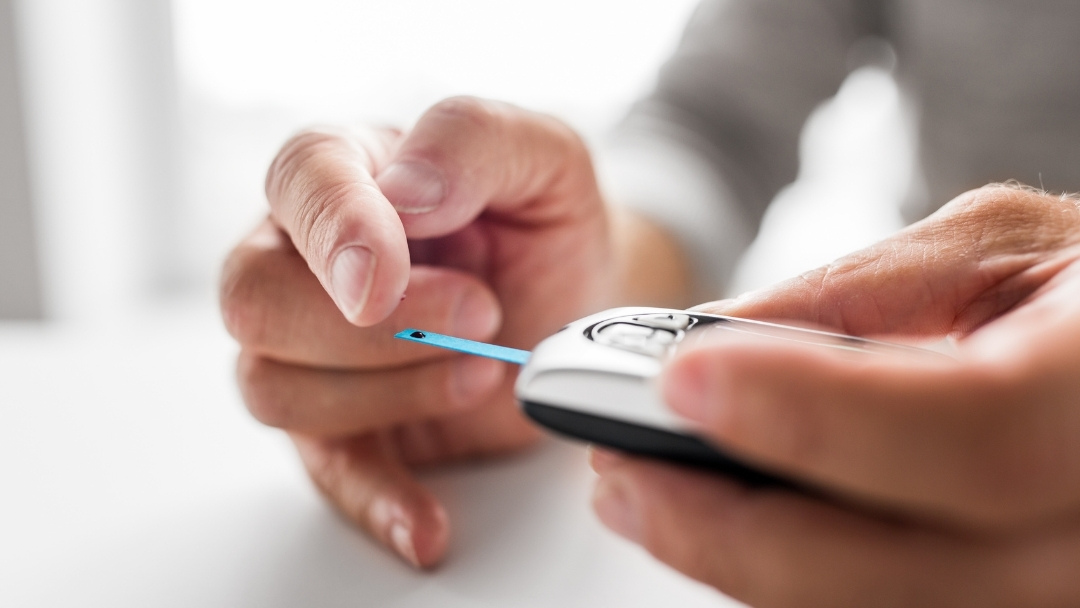What Is Low Blood Sugar?
The body typically uses glucose – a simple carbohydrate – for its immediate energy needs; the amount circulating in the body is known as blood sugar. Blood sugar levels below 70 milligrams per deciliter are in the hypoglycemia range, also known as low blood sugar, which can cause symptoms such as:
- Irritability
- Mood swings
- Headaches
- Light-headedness
- Feeling overheated
- Shakiness
- Feeling of weakness
- Inability to concentrate
- “Hangriness”
Because the brain gets top priority for blood sugar, the body will begin to shut down non-essential systems and processes so that the brain can get the glucose it needs. Children with a history of seizures risk the onset of a seizure when low blood sugar occurs. Children with neurodevelopmental disorders such as autism, ADHD, learning disabilities or Sensory Processing Disorder as well as those with PANS/PANDAS risk an exacerbation of symptoms when blood sugar drops too low.
Part of this is linked to the mitochondrial dysfunction that is common in these children, which leads to inadequate energy production, and part of this can also be due to an increase of glutamate within the brain.
Any source of stress placing excess demand on the immediate energy sources of the body can cause blood sugar levels to drop below 70 mg/dl.
A common indicator that hypoglycemia is approaching is a craving for sugary or salty foods, or for high-carbohydrate “comfort” foods like crackers, bread and cereal.
Chronic Low Blood Sugar
Chronic low blood sugar can lead to adrenal exhaustion, which causes increased fear and anxiety, poor coping skills and negatively affects a child’s sleep patterns.
Low blood sugar also manifests as anger, causing aggressive behaviors in children with neurological conditions such as depression, bipolar, autism and addictions. Low blood sugar can also trigger mood swings, high anxiety, non compliance, meltdowns, irritability, digestive disorders and uncontrollable anger.
How to Prevent Hypoglycemia
Hypoglycemia can be stabilized with diet by consistently eating protein, fat and fiber during every meal and snack.
More fat, moderate protein and lower amounts carbohydrates, especially processed carbohydrates and sugars, can stop the vicious cycle of low blood sugar.
Excess sugar and carbohydrates continue the vicious cycle of low blood sugar that creates a false sugar energy high, which eventually drops when the blood sugar lowers down, causing fatigue with anxiety, fear and irratibility. Some people refer to this as a blood-sugar rollercoaster.
The first step in controlling low blood sugar is to remove all refined white simple sugars and carbohydrates. Eliminate all chemical preservatives, dyes, and hidden sugars. Your child may also need to eat more frequent small meals that include fat, fiber and protein to help give your children a feeling of strength, well-being, brain power, calmness and stability.
Increase Fat
Fat has been given a bad name, unfortunately, because of conclusions drawn from the Seven Countries study conducted by Ancel Keys in the 1950s, which hypothesized that saturated fat and cholesterol were responsible for the high rate of cardiovascular disease in industrialized countries. The Weston A. Price Foundation and others later concluded that it’s not saturated fat and cholesterol that are responsible, it’s the high amounts of processed foods that include vegetable oils, trans fats and simple carbohydrates including sugar.
Still, people have believed for decades that fat is bad for you. Vegetable oils, fried foods and trans fats (such as margarine) should be removed from the diet, as they are unhealthy, but there is a wide range of fats and oils that are beneficial to human health. Saturated fats such as tallow, duck fat, ghee, coconut oil, MCT oil and butter (if tolerated), monounsaturated fats like olive oil and avocado oil as well as omega-3- and omega-9-rich oils such as cod liver oil, krill oil, flax oil and walnut oil are all incredibly important to improving health. Raw nuts and seeds are also good choices.
Adding more fat into your child’s diet provides a more consistent and stable source of energy for the body, thus helping to stabilize blood sugar. A very-high fat diet such as the ketogenic diet, although hard to implement without diligence, is useful for forcing the body to run on ketones insted of glucose, which can be very helpful for children with seizures and possibly other neurological conditions. However, it likely isn’t necessary to go to such extremes for your child’s low blood sugar. Instead, be sure that there’s some amount of fat in each meal and snack.
Think Protein
Protein is another macronutrient that is helpful in stabilizing blood sugar. Just be sure not to give too much protein, as that can be hard on the kidneys and digestion and also because excess protein is converted into glucose.
Kids are usually running out the door to catch a bus or having that last minute rush to finish their homework. Protein shakes are great in the morning for a rushed start. If your child is sensitive to dairy then try egg-white, pea or vegan protein shakes; otherwise, try whey protein shakes.
Make sure the shakes are clean with no chemical preservatives and are sweetened with stevia or xylitol, natural rainforest sweeteners that don’t increase yeast. Also make sure the carbohydrates are only one to two grams per serving. Other options are the old-fashion egg nog or your child’s favorite organic fruit smoothie with protein powder. Add nut and grain milks such as almond, coconut and cashew to make tasty nutritious protein drinks as well.
Clean protein bars with stevia or xylitol sweeteners and 10 to 20 grams of protein or nuts and seed bars are also a great protein snack for children mid-morning at school.
Spirulina is a seaweed with a high amount of protein and is very alkalizing. It can go in fruit or vegetable juices or taken in a capsule.
If your child has very low muscle tone, leaky gut syndrome and other digestive and absorption difficulties try adding predigestive protein (such as Nutricology Arthred Collagen Formula) to your child’s shake to make sure protein is being absorbed by your child.
If your morning is not so rushed, eggs, turkey bacon, bean burritos, last night’s leftovers of fish, sausages, chicken or hamburger can all be good protein sources in the morning for breakfast.
Increase Fiber
Think of fiber as the big logs in a fire that may take a while to catch fire but that burn for longer. Simple carbohydrates such as starches and sugar are akin to kindling that catches fire quickly but is also burnt up quickly.
By eating foods with fiber such as whole grains (which is not the same as foods that claim to be “made with whole grains”), vegetables and fruit, blood sugar can be stabilized, which can head off hypoglycemia. Fiber, of course, can also be helpful for ensuring the daily elimination of wastes from the body, which is another great reason to include it in the diet.
Be sure to read labels of foods that come with labels. Consider thinking of carbohydrates in terms of “net carbs”, which means subtracting the number of fiber in grams from the number of total carbohydrates in grams. For example, yogurt is often typically high in both total carbohdyrates as well as net carbohydrates because it has very little or no fiber as well as more sugar.
Lower Stress from All Sources
Stress places a big strain on the body’s energy demands and can quickly lead to reactive hypoglycemia. Lowering stresses from all sources can help to stabilize blood sugar issues over time.
In addition to the typical emotional stress, don’t overlook other types of stress that come from:
- A poor night’s sleep
- Faulty visual processing, which can be corrected with vision therapy
- Artificial lighting
- Non-optimal ambient temperatures
- Faulty auditory processing, which can be corrected with auditory therapy
- Other sensory issues, which can be corrected with sensory integration therapy
- Retained reflexes, which can be corrected with reflex integration
- Toxicity
- Hidden food sensitivities
- Nutritional deficiencies
- An inflammatory diet, which can come from food sensitivities and processed foods
- Other sources of a body’s total load of stressors
Don’t Forget the Minerals
Stress can also use up minerals that are necessary for the production of cortisol and adrenaline by the adrenal glands very quickly. Consuming optimal amounts of minerals such as magnesium, zinc, selenium and iodine can improve the body’s ability to handle stress and thus stave off hypoglycemia. Consult a knowledgeable healthcare practitioner for guidance about what’s best for your child and remember that
Purchase a Home Glucose Monitor
A home glucose monitor is an inexpensive yet effective way to determine if your attempts to balance blood sugar are on track. Optimal fasting levels are between 70 and 85 mg/dl. Be sure to check in the morning before eating and when a potential hangry attack is oncoming. For best results, keep a food and blood-sugar diary, so you can see what works best for your child over time.
Dietary Tips for Your Child’s Meals and Snacks
High protein foods, good quality fats, complex carbohydrates and fruits and vegetables are all good foods for the developing brain that keep the hypoglycemic effect in check, calming down anxiety and controlling negative behaviors.
Consider making or buying foods that are “keto friendly” and/or “paleo friendly” because they typically have higher amounts of fat, fiber and protein that are needed to stabilize blood sugar. In addition:
- Use Ceylon cinnamon freely in shakes or wherever possible because it helps regulate blood sugar.
- Avoid refined carbohydrates, fried foods, trans-fatty acids and sugars of any kind. No refined sugar, white flour, white rice or white bread.
- Substitute sugar with xylitol or stevia.
- Eat protein for breakfast to start the day; eat small meals, if necessary, throughout the day.
- Feed the sugar drop with fat, fiber and protein.
- Make time for breakfast! Breakfast is so important, especially for children with neurodevelopmental disorders, autoimmune disorders and mood disorders, because it can prevent low blood sugar. When you’re wondering what’s for breakfast, you should know that it is the most important meal of the day for children (and adults!) Often times, however, it is one of the most skipped-over meals of the day.
Still Looking for Answers?
Visit the Epidemic Answers Practitioner Directory to find a practitioner near you.
Join us inside our online membership community for parents, Healing Together, where you’ll find even more healing resources, expert guidance, and a community to support you every step of your child’s healing journey.
Sources & References
Adebayo, O., et al. The changing face of diabetes in America. Emerg Med Clin North Am. 2014;32(2):319-27.
Aucoin, M., et al. Generalized anxiety disorder and hypoglycemia symptoms improved with diet modification. Case Rep Psychiatry. 2016;2016.
Bădescu, S.V., et al. The association between Diabetes mellitus and Depression. J Med Life. 2016 Apr-Jun; 9(2): 120–125.
Banerjee, S., et al. Ayurveda in changing scenario of diabetes management for developing safe and effective treatment choices for the future. J Complement Integr Med. 2015.
Basic, M., et al. Obesity: genome and environment interactions. Arh Hig Rada Toksikol. 2012;63(3):395-405.
Bipartisan Policy Center. Lots to lose how America’s health and obesity crisis threatens our economic future. Washington, D.C.: Bipartisan Policy Center,; 2012.
Bradford, B.L., et al. Mitochondrial Dysfunction and Type 2 Diabetes. Science. 2005 Jan 21;307(5708):384-7.
Carlson, J.A., et al. Dietary-related and physical activity-related predictors of obesity in children: a 2-year prospective study. Child Obes. 2012;8(2):110-5.
Centers for Disease Control and Prevention. All About Your A1C.
Centers for Disease Control and Prevention. Diabetes Tests.
Centers for Disease Control and Prevention. National Diabetes Statistics Report, 2020: Estimates of Diabetes and Its Burden in the United States.
Choquet, H., et al. Genomic insights into early-onset obesity. Genome Med. 2010;2(6):36.
Classen, J.B. Review of evidence that epidemics of type 1 diabetes and type 2 diabetes/metabolic syndrome are polar opposite responses to iatrogenic inflammation. Curr Diabetes Rev. 2012;8(6):413-8.
Cortese, S., et al. Attention-deficit/hyperactivity disorder, iron deficiency, and obesity: is there a link? Postgrad Med. 2014;126(4):155-70.
Desai, J.R., et al. Diabetes and asthma case identification, validation, and representativeness when using electronic health data to construct registries for comparative effectiveness and epidemiologic research. Med Care. 2012;50 Suppl:S30-5.
Grammes, J., et al. Fear of hypoglycemia in patients with type 2 diabetes: The role of interoceptive accuracy and prior episodes of hypoglycemia. J Psychosom Res. 2018;105:58-63.
Hao, J., et al. Mitochondrial nutrients improve immune dysfunction in the type 2 diabetic Goto-Kakizaki rats. J Cell Mol Med. 2009 Apr;13(4):701-11.
He, C., et al. Targeting gut microbiota as a possible therapy for diabetes. Nutr Res. 2015.
Hinzmann, R., et al. What do we need beyond hemoglobin A1c to get the complete picture of glycemia in people with diabetes? Int J Med Sci. 2012;9(8):665-81.
Kamba, A., et al. Association between higher serum cortisol levels and decreased insulin secretion in a general population. PLOS ONE. 2016;11(11):e0166077.
Kogut, S.J., et al. Evaluation of a program to improve diabetes care through intensified care management activities and diabetes medication copayment reduction. J Manag Care Pharm. 2012;18(4):297-310.
Kong., A.P, et al. Diabetes and its comorbidities–where East meets West. Nat Rev Endocrinol. 2013;9(9):537-47.
Laron, Z. Interplay between heredity and environment in the recent explosion of type 1 childhood diabetes mellitus. Am J Med Genet. 2002;115(1):4-7.
Levi, J., et al. F as in fat how obesity threatens America’s future : 2012. Washington, D.C.: Trust for America’s Health; 2012.
Ly, N.P., et al. Gut microbiota, probiotics, and vitamin D: interrelated exposures influencing allergy, asthma, and obesity? J Allergy Clin Immunol. 2011;127(5):1087-94; quiz 95-6.
Magrone, T., et al. Childhood obesity: immune response and nutritional approaches. Front Immunol. 2015;6:76.
Noland, R.C., et al. Carnitine insufficiency caused by aging and overnutrition compromises mitochondrial performance and metabolic control. J Biol Chem. 2009 Aug 21;284(34):22840-52.
Pacal, L., et al. Parameters of oxidative stress, DNA damage and DNA repair in type 1 and type 2 diabetes mellitus. Arch Physiol Biochem. 2011;117(4):222-30.
Power, R.A., et al. Carnitine revisited: potential use as adjunctive treatment in diabetes. Diabetologia. 2007 Apr;50(4):824-32.
Pulgaron, E.R. Childhood obesity: a review of increased risk for physical and psychological comorbidities. Clin Ther. 2013;35(1):A18-32.
Rector, R.S., et al. Mitochondrial dysfunction precedes insulin resistance and hepatic steatosis and contributes to the natural history of non-alcoholic fatty liver disease in an obese rodent model. J Hepatol. 2010 May;52(5):727-36.
Renteria, I., et al. [Factors affecting oxidative damage in obese children: an exploratory study]. Nutr Hosp. 2015;31(4):1499-503.
Rosa, J.S., et al. Altered inflammatory, oxidative, and metabolic responses to exercise in pediatric obesity and type 1 diabetes. Pediatr Diabetes. 2011;12(5):464-72.
Salzer, H.M. Relative hypoglycemia as a cause of neuropsychiatric illness. J Natl Med Assoc. 1966;58(1):12-17.
Sanchez, M., et al. Childhood obesity: a role for gut microbiota? Int J Environ Res Public Health. 2015;12(1):162-75.
Shen, W., et al. Protective effects of R-alpha-lipoic acid and acetyl-L-carnitine in MIN6 and isolated rat islet cells chronically exposed to oleic acid. J Cell Biochem. 2008 Jul 1;104(4):1232-43.
Shlomowitz, A., et al. Anxiety associated with self monitoring of capillary blood glucose. British Journal of Diabetes. 2014;14(2):60-63.
Smith, K.J., et al. Association of diabetes with anxiety: a systematic review and meta-analysis. J Psychosom Res. 2013;74(2):89-99.
Sreekumar, R., et al. Skeletal muscle mitochondrial dysfunction & diabetes. Indian J Med Res. 2007 Mar;125(3):399-410.
Tuomi, T., et al. The many faces of diabetes: a disease with increasing heterogeneity. Lancet. 2014;383(9922):1084-94.
Vaarala, O. Is the origin of type 1 diabetes in the gut? Immunol Cell Biol. 2012;90(3):271-6.
Vaarala, O. Gut microbiota and type 1 diabetes. Rev Diabet Stud. 2012;9(4):251-9.
Verberne, A.J.M., et al. Adrenaline: insights into its metabolic roles in hypoglycaemia and diabetes. Br J Pharmacol. 2016;173(9):1425-1437.




